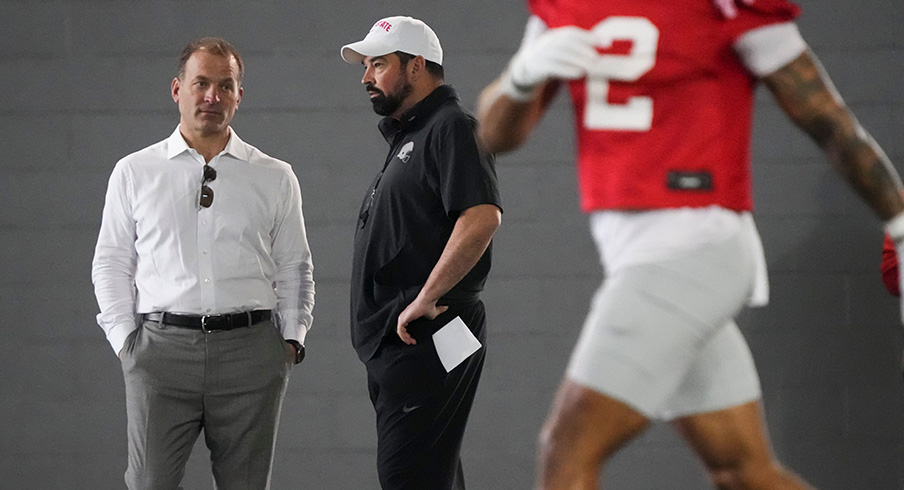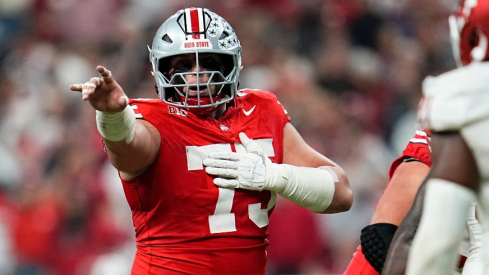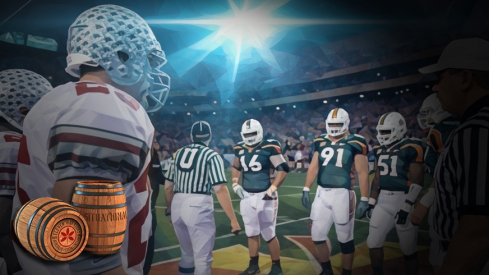Collectives and brand affiliates disbursed "around $20 million" to Buckeye football players this past year, Ohio State athletic director Ross Bjork told Ross Dellenger of Yahoo Sports this week.
Bjork attended Big Ten Media Days with Ohio State head coach Ryan Day, wide receiver Emeka Egbuka, defensive end Jack Sawyer and cornerback Denzel Burke. Like those Buckeyes, Bjork had several interviews at Lucas Oil Stadium, including one where Dellenger asked him to discuss Ohio State's future as college sports enters a new revenue-sharing model. His primary question: Will disbursements of around $20 million continue in Columbus?
'It's too early to predict," Bjork said. "How is it going to be broken down from a Title IX standpoint? The challenge is, we're up against the clock. We're signing athletes in football in December. We need some clarity sometime this fall."
According to Dellenger, the NCAA and power conferences are expected to file a long-form agreement on Friday to settle three antitrust cases. The 70-page document outlines the particulars of the two-part deal, including a $2.77 billion payment to former athletes and a new model allowing colleges and universities to share 22% of the average conference school's primary revenues.
On June 20, Bjork told Joey Kaufman of The Columbus Dispatch that Ohio State will share the entire 22% with its athletes. Those payments would reach around $22 million in 2025 and would increase year after year. As Ohio State creates a plan for payments to athletes across its 36 varsity programs, Bjork told The Dispatch that Title IX remains the most significant variable. He made the same point to Dellenger on Tuesday.
Incoming AD Ross Bjork says Ohio State will participate in revenue sharing and pay athletes the maximum amount allowed while abiding by Title IX rules. https://t.co/pHgHzCiGdM
— Eleven Warriors (@11W) June 20, 2024
“We all are going to follow Title IX,” Bjork said. “It applies to our athletic programs, universities, all of those things. But this is a new pocket of financial aid or compensation, a new bucket that was not contemplated when only financial aid and just grants-in-aid were talked about in the original Title IX legislation. We need a lot of analysis. What does the legal analysis say around this newfound bucket of money?”
Bjork later added that Ohio State is "modeling, analyzing and testing" different ways to distribute revenue against "legal analysis." Dellenger reported that many other departments are conducting the same modeling, a development that encourages Bjork and Day.
“I think coming together and having some uniformity is the most important thing here,” Day told Yahoo Sports on Tuesday. “In terms of what that number is, that’s over my head. I know we need to be Title IX compliant at the same time. I think some uniformity is not unreasonable.”
According to Dellenger, most provisions in the settlement offer schools flexibility on various issues regarding localized decisions – "a way for college leaders to remove the NCAA and conference from antitrust challenges," he wrote. As such, Bjork hopes the Big Ten could consider a conference-wide mandate around revenue-sharing.
“The question is, can it be some uniform standard across the country without getting ourselves into another legal entanglement?” Bjork asked.
While Bjork charts a course ahead for Ohio State athletics, Day will shift focus to the 2024 college football season. He will also, at times, need to look toward the future, specifically to the program's top-ranked 2025 recruiting class.
Bjork told Dellenger that Day and his staff have been purposely vague with recruits about their NIL and revenue-sharing opportunities, considering there's no official plan in place yet.
“We’re telling them there’s going to be three buckets: traditional financial aid, revenue sharing, and the name, image and likeness category,” Bjork said. “What the NIL ecosystem looks like in the future is still to be determined, but those are basically the three categories of how you will receive (compensation). What those numbers are and what that looks like … no one can provide any clarity on right now.”


